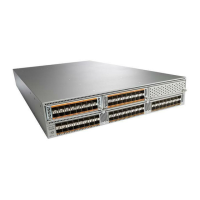Configuring the Default Zone Access Permission
To permit or deny traffic to members in the default zone, perform this task:
SUMMARY STEPS
1.
configure terminal
2.
zone default-zone permit vsan vsan-id
3.
no zone default-zone permit vsan vsan-id
DETAILED STEPS
PurposeCommand or Action
Enters global configuration mode.configure terminal
Example:
switch# configure terminal
switch(config)#
Step 1
Permits traffic flow to default zone members.
zone default-zone permit vsan vsan-id
Example:
switch(config)# zone default-zone permit vsan 13
Step 2
Denies (default) traffic flow to default zone
members.
no zone default-zone permit vsan vsan-id
Example:
switch(config)# no zone default-zone permit vsan 40
Step 3
FC Alias Creation
You can assign an alias name and configure an alias member using the following values:
• pWWN—The WWN of the N port is in hex format (for example, 10:00:00:23:45:67:89:ab).
• fWWN—The WWN of the fabric port name is in hex format (for example, 10:00:00:23:45:67:89:ab).
• FC ID—The N port ID is in 0xhhhhhh format (for example, 0xce00d1).
• Domain ID—The domain ID is an integer from 1 to 239. A mandatory port number of a non-Cisco
switch is required to complete this membership configuration.
• Interface—Interface-based zoning is similar to port-based zoning because the switch interface is used
to configure the zone. You can specify a switch interface as a zone member for both local and remote
switches. To specify a remote switch, enter the remote switch WWN (sWWN) or the domain ID in the
particular VSAN.
Cisco Nexus 5000 Series NX-OS SAN Switching Configuration Guide, Release 5.2(1)N1(1)
OL-27583-01 141
Configuring and Managing Zones
Zone Sets

